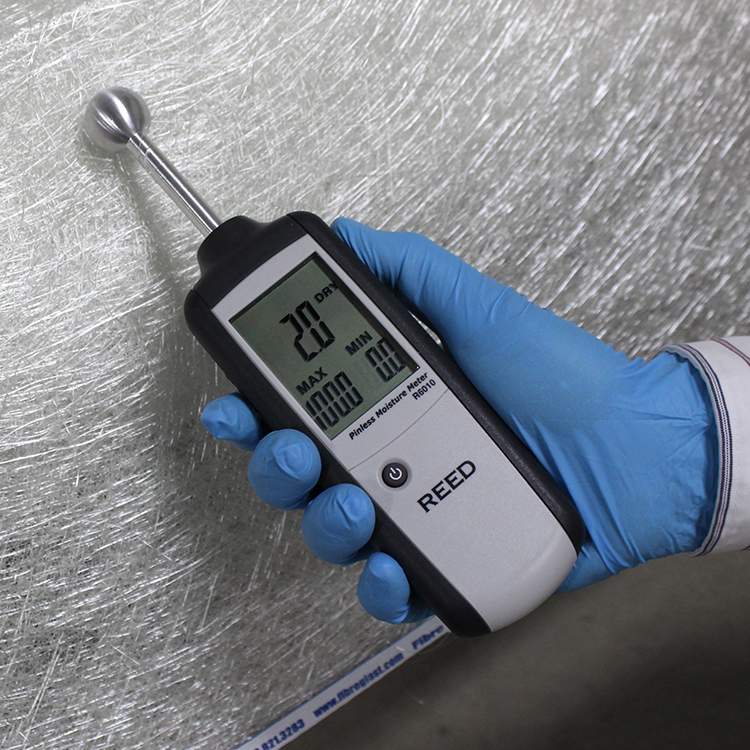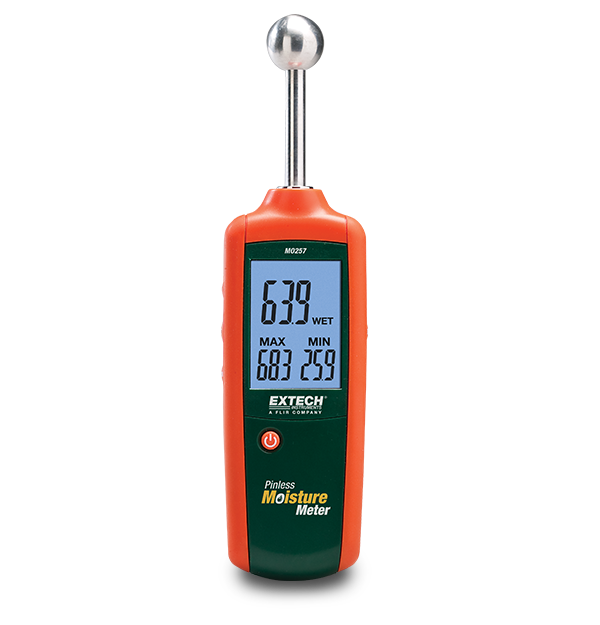Moisture Meter Reviews: Contrasting the very best Models for Expert and DIY Usage
Moisture Meter Reviews: Contrasting the very best Models for Expert and DIY Usage
Blog Article
Delve Into the Globe of Moisture Meters: Everything You Need to Know
In the world of moisture meters exists a world of accuracy and functionality that commonly goes undetected. These tools, while relatively uncomplicated, hold a wealth of details that can considerably influence numerous markets and applications. Understanding just how moisture meters run, the various types available, and their varied usages can shed light on their relevance in guaranteeing quality and effectiveness. By checking out the complexities of moisture meters, one can reveal a valuable tool that transcends mere dimension, offering insights that can make a substantial distinction in numerous areas.
Exactly How Moisture Meters Work
Moisture meters run by gauging the electrical conductivity or capacitance of products to establish the moisture content present. These meters are very useful tools throughout various markets, including farming, woodworking, and construction. By utilizing different techniques such as pin-type or pinless innovation, moisture meters give exact readings that help professionals make notified decisions.
Pin-type moisture meters function by putting the sharp pins right into the material being checked. The electrical conductivity in between the pins is then measured, with greater moisture degrees leading to increased conductivity. Moisture Meter. On the other hand, pinless dampness meters utilize electromagnetic signals to check a bigger location without creating any damage to the product's surface area. These meters are suitable for promptly examining moisture degrees in big areas or finished products.
No matter the technique made use of, wetness meters play an essential function in protecting against problems such as mold development, architectural damages, or product problems caused by excess wetness. Recognizing just how these meters job is vital for guaranteeing the quality and integrity of materials in different applications.
Kinds Of Moisture Meters
Offered the essential role wetness meters play in numerous sectors, it is important to recognize the different kinds available to specialists for properly analyzing dampness levels - Moisture Meter. There are primarily two major kinds of dampness meters: pin-type and pinless wetness meters

On the various other hand, pinless wetness meters make use of electro-magnetic sensor plates to check a larger area of the material without causing any damage. This type is appropriate for promptly scanning large areas and is typically utilized for floor covering, wall surfaces, and ceilings. Pinless meters are hassle-free for taking analyses on finished surface areas without leaving any kind of visible marks.
Both sorts of wetness meters have their benefits and are chosen based upon the certain demands of the work handy. Recognizing the distinctions between these types is crucial for experts to make precise moisture evaluations.
Applications Throughout Industries
Building specialists depend on moisture meters to assess the dampness levels in building materials like timber, drywall, and concrete, which is crucial for preserving structural integrity and avoiding concerns like rot or mold. The flooring industry utilizes moisture meters to measure the moisture material in subfloors prior to installing different flooring treatments, stopping costly problems due to excess wetness. In the food sector, dampness meters are utilized to keep an eye on and regulate moisture levels in items such as grains, nuts, and dried fruits to keep quality and high quality.
Tips for Utilizing Dampness Meters
Use the wetness meter's calibration settings to make Get More Information certain accurate analyses when determining the moisture content in various products. In addition, make certain the meter is set to the correct moisture array for the material you are determining to get the most accurate outcomes.
When making use of a pin-type wetness meter, put the pins to the appropriate deepness advised for the product being examined. This ensures that the dampness readings are drawn from the right deepness within the material, providing an extra accurate representation of its moisture material. For pinless wetness meters, keep in mind to maintain correct contact with the material's surface to get trustworthy readings.
Frequently check and replace the batteries in your wetness meter to avoid imprecise readings because of low power. Shop the meter in a completely dry and secure location when not being used to lengthen its life-span and maintain its precision. By complying with these ideas, you can maximize the efficiency of your moisture meter and obtain accurate moisture web content dimensions across different products.
Maintenance and Calibration
To guarantee the accuracy of dampness content dimensions, normal maintenance and calibration of the dampness meter are crucial action in its appropriate performance. Maintenance involves keeping the dampness meter tidy and totally free from debris that can influence its readings. It is crucial to comply with the manufacturer's guidelines for cleansing to stop damages to the device. In addition, routine calibration is essential to validate the accuracy of the readings. Calibration readjusts the moisture meter to make certain that it offers consistent and reliable recommended you read outcomes.
Calibration ought to be done regularly, specifically if the dampness meter is utilized frequently or in vital applications where specific dimensions are required. By preserving and adjusting the dampness meter consistently, individuals can trust the precision of the wetness content measurements acquired.
Final Thought

To conclude, wetness meters play an important function in numerous sectors by properly measuring the moisture web content of products. Understanding how these gadgets work, the different types available, and proper maintenance and calibration are important for obtaining dependable results. Whether in building and construction, farming, or manufacturing, using dampness meters aids make sure quality assurance and effectiveness in procedures.

In final thought, moisture meters play a crucial function in different sectors by precisely gauging the moisture material of products.
Report this page